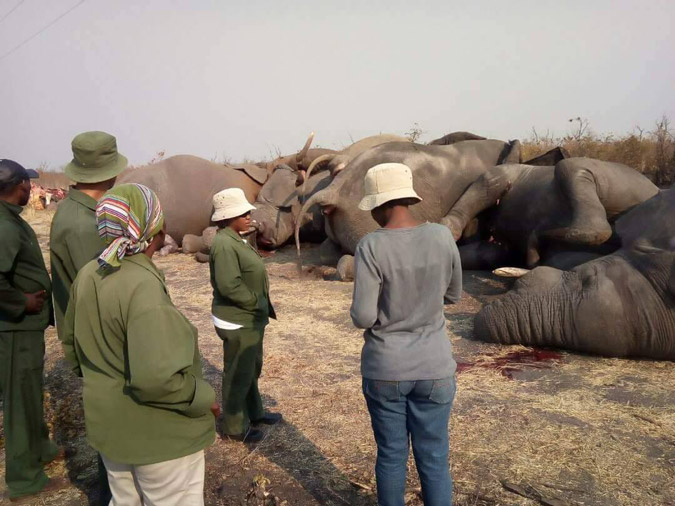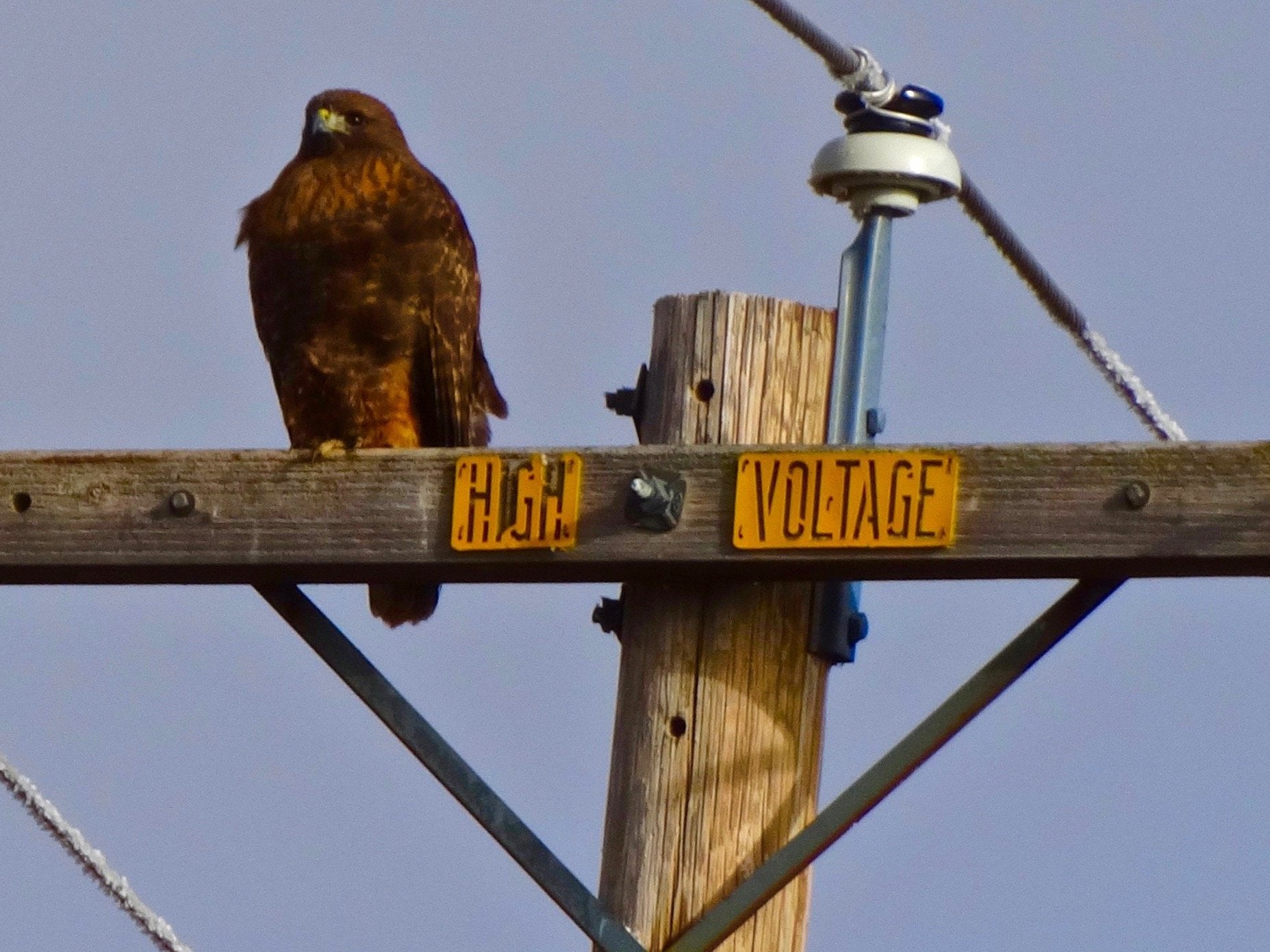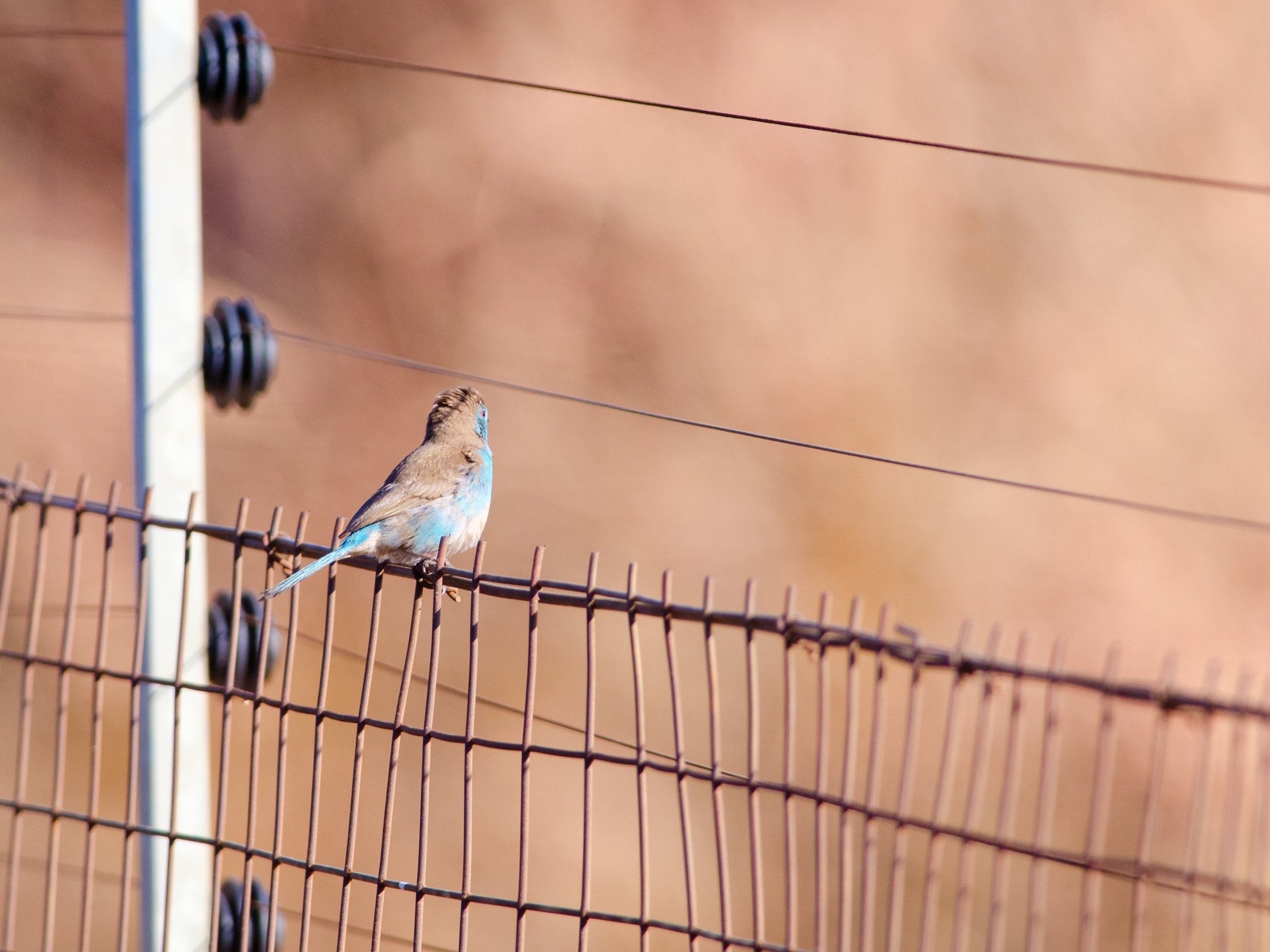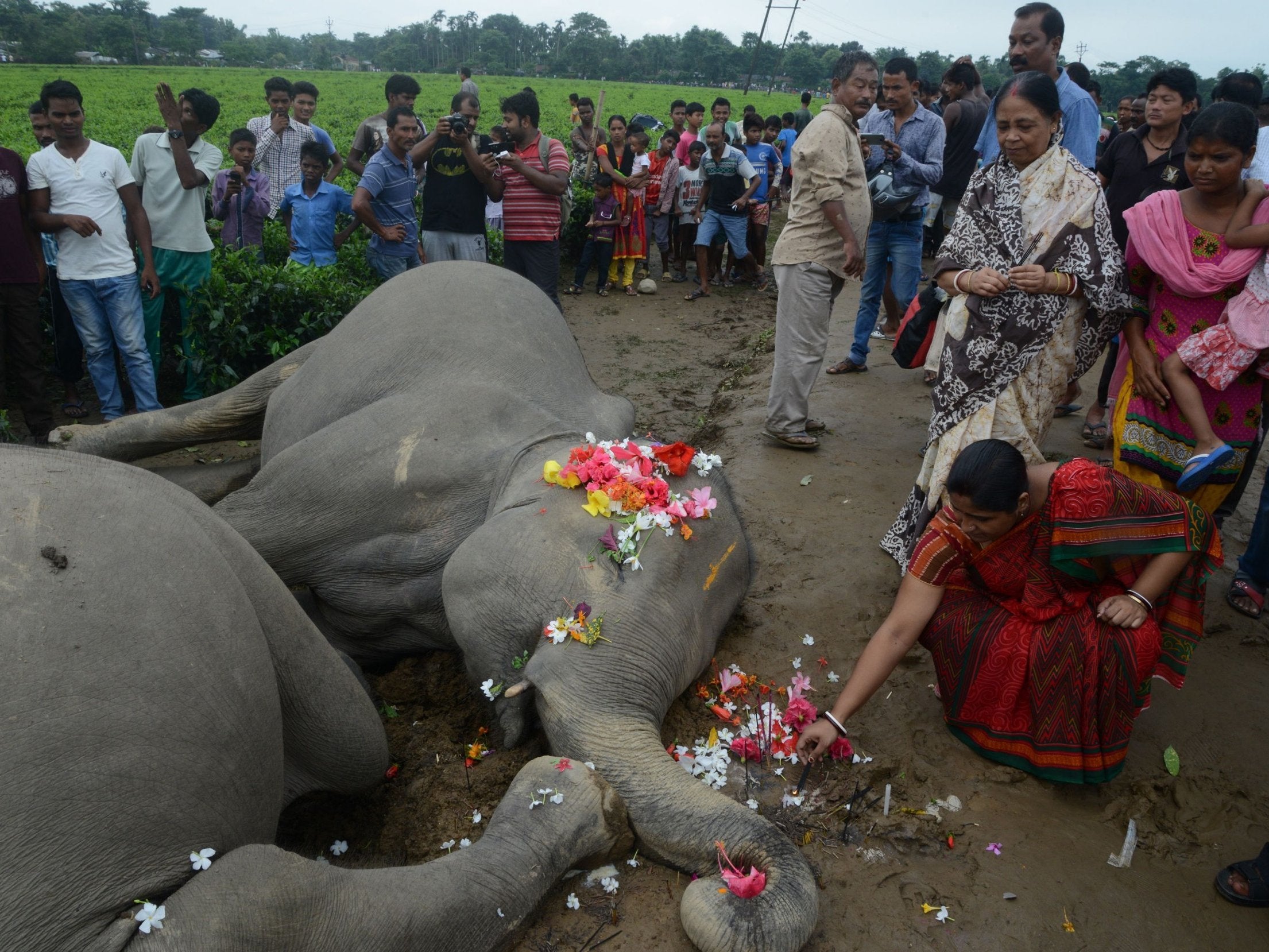Intrusions Into Nature's Habitats
"Farmers will walk along fences and find six to eight dead tortoises in the space of one hundred meters."
"These [electrical] fences have got the capacity to decimate whole [animal species] populations, and they're doing that."
Luke Arnot, veterinary surgeon, South Africa
 |
| Elephants killed after being electrocuted when they pushed power lines into a pool of water they were drinking from. The blood is from burst blood vessels, a common symptom of electrocution. Africa Geographic, 2017 |
"The terrible thing about power lines is that every single one will kill. But people here say they don't care because we need to develop our country."
"In wildlife areas in Kenya, hyenas and other animals make paths to power lines to get at dead birds."
"This makes it impossible to go underneath power lines to enumerate the number of deaths. But I think this is a growing threat and that it’s enormously underestimated by most wildlife conservationists, wardens and conservancy managers."
Simon Thomsett, ornithologist, trustee, Kenya Bird of Prey Trust
 |
Electrocution is becoming so common that it jeopardises the survival of some species
Getty/iStock
|
"Animals have caused outages, disruptions and damage to infrastructure amounting to billions of dollars."
"We estimate that 60 per cent of line faults and interruptions in South Africa are wildlife-related. It’s really important to engineer this problem out."
Constant Hoogstad, senior manager, industry partnerships, Endangered Wildlife Trust, South Africa
Africa is in its development stages, South Africa a country where ranches, farms and national parks are partitioned off, and surrounded by kilometers of electrical fencing to ensure that unwanted animals are kept out, along with human intruders' that livestock is adequately protected from predators, and so it is with wildlife in national parks as well. The fencing that has such a defined purpose also represents a solution to one problem of unwanted intrusion while at the same time becomes a deadly hazard to any animals which come afoul of its protective presence.
 |
Interventions to reduce collisions with power lines have so far met with little success
Getty/iStock
|
To these unwary animals these fences have an incontestable deadly impact. Smaller animals such as birds and reptiles which are meant to be environmentally protected become casualties in huge numbers. Trip wires positioned some 15 centimeters off the ground meant to zap a deterrence to hunting carnivores like lions and bush pigs accustomed to raiding crops are to a large measure to blame for the carnage. The presumption of a deterrent effect does not always result; some creatures after being stunned simply remain where they are.
Tortoises hitting a tripwire withdraw into their shells, failing to leave and taking haven in their instinctive withdrawal where it feels itself immune to danger while pangolins tend to curl over the wire into a defensive posture, and when both of these animals react as they would under any threatening circumstances, they remain shocked and finally their hearts cease beating. A 2008 study undertaken in South Africa revealed 21,000 reptiles are killed annually on contact with electrical fences.
Dr. Arnot, alarmed by these statistics, has attempted to alert authorities as well as farmers who install those fences. Publishing articles in farming and ranching journals detailing commonsense and modest changes that will bypass some of the dangers inherent in the electric fences to devise wildlife-friendly guidelines in installing electrical fences. Principally, to lift the trip wires to a greater height from the ground as well as operating the current at night exclusively since this is when predators tend to stalk their prey. Simple. Effective. Ignored.
Alongside the threats to wildlife of electric fences are power lines strung without a thought to outcome in countries in a hurry to advance their infrastructure and which end up electrocuting animals where collisions with power lines are so fatal for the avian population. Along with the deadly costs in conservation, a notable economic toll is guaranteed. As an example, a vervet monkey caused a nationwide blackout after tripping a transformer in Kenya in 2016. Power was cut to 4.7 million homes and businesses.
Surivival of some species is jeopardized through electrocution and considered a leading threat to Cape vultures in southern Africa, already endangered, along with critically endangered white-backed vultures. An estimated four thousand endangered Saker falcons are electrocuted in Central Asia each year. Over one hundred endangered Asian elephants were killed by electrocution in the state of Odisha, India over a dozen years through contact with power lines.
 |
Even large animals such as elephants are at risk of electrocution (in India)
AFP/Getty
|
In various countries leopards, Cape buffalo, white rhinos, Giraffes and African elephants have been electrocuted in numbers. Thirty species and subspecies of primates are affected in Asia, Africa and Latin America by electrocution. According to Lydia Katsis, a recent graduate of Bristol Veterinary School in Britain, "This is a widespread problem, but it’s also under-reported and under-studied, so there could be more species affected."
Labels: Accidents, Africa, Asia, Bioscience, Electrocution, Endangered Species, India, Species at Risk

0 Comments:
Post a Comment
<< Home